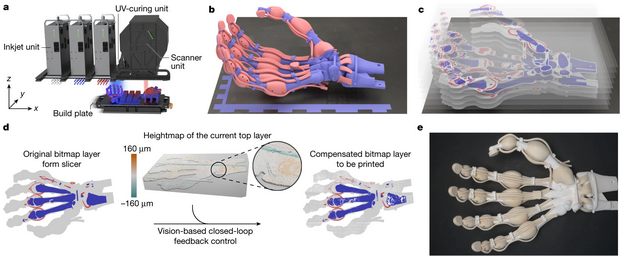Breakthrough: First Robotic Hand with Human-Like Internal Structure Developed
Scientists from the Swiss Federal Institute of Technology (ETH) Zurich and the American startup Inkbit have achieved a major breakthrough in robotics by creating the world’s first robotic hand with an internal structure that closely resembles that of a human hand. This accomplishment was made possible by a new 3D printing method called Vision-Controlled Jetting (VCJ).
Key Features of the New Robotic Hand
- Human-like Internal Structure: The hand’s internal design includes elements that mimic human bones, ligaments, and tendons, allowing for more natural movement.
- Soft and Flexible Motion: Unlike traditional robotic hands, which often move in a stiff and mechanical way due to the lack of real bones and flexible tissues, this new hand can move more gently and flexibly.
- Advanced Materials: The hand is made using slow-curing thiolene polymers, which have high elastic properties, making the hand both durable and flexible.
Innovative 3D Printing Technology
Professor Robert Katzschmann from ETH Zurich, one of the study’s authors, explained that the new 3D printing method eliminates the need for mechanical planarization (layer leveling), which previously limited the use of soft materials. Instead, the VCJ method uses feedback to compensate for any unevenness in previous layers, enabling the creation of complex, flexible structures.
Additional Features and Applications
- The robotic hand is equipped with touch and pressure sensors.
- It features 19 tendon-like structures that allow for precise control of the wrist and fingers.
- The research team also used the VCJ method to print a robotic heart, a six-legged robot, and a metamaterial capable of absorbing vibrations.
Future Prospects
According to Katzschmann, the VCJ method could eventually replace all contact-based jetting methods and be used to manufacture functional parts for robotics, medical implants, and other industries. The high resolution, suitable material properties, and durability of VCJ printing make it promising for both scientific and commercial applications.



